SOUTHWEST UTAH PUBLIC HEALTH FOUNDATION SUMMER 2021
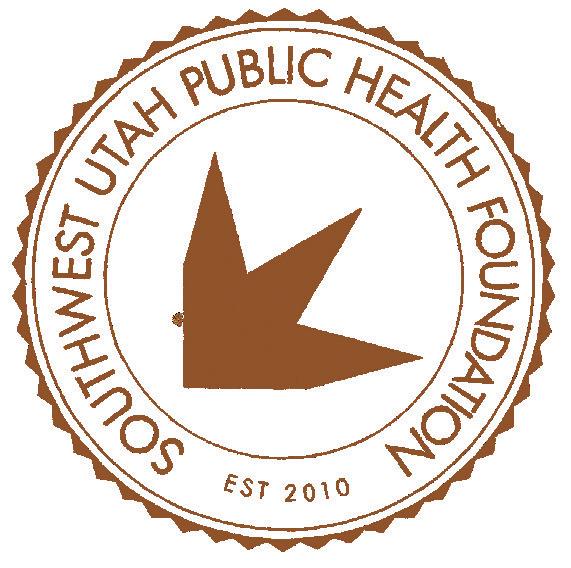
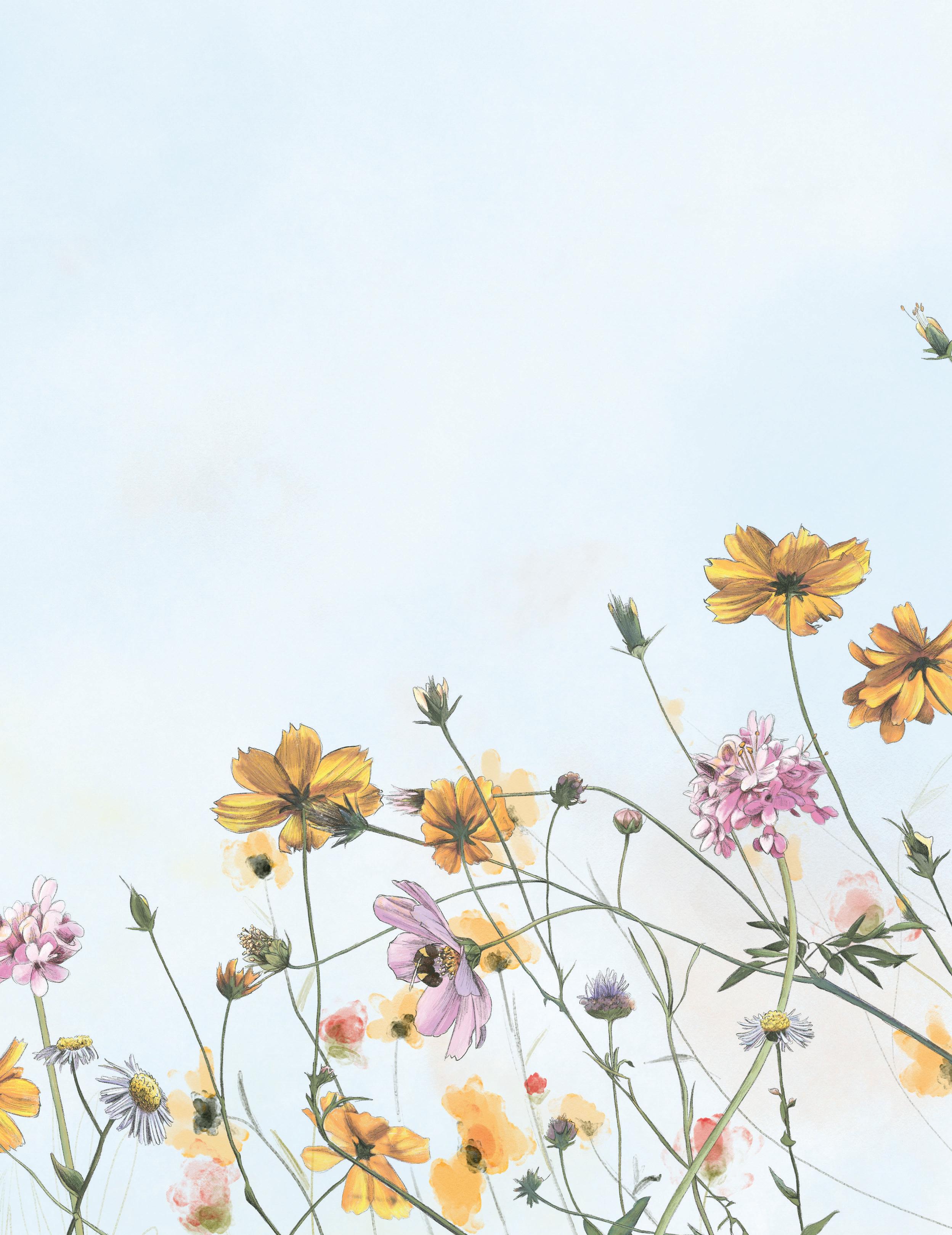
HEAT SAFETY
PG. 8
PANDEMIC VOLUNTEERS
PG. 16
ANNUAL REPORT
PG. 28


SOUTHWEST UTAH PUBLIC HEALTH FOUNDATION SUMMER 2021


HEAT SAFETY
PG. 8
PANDEMIC VOLUNTEERS
PG. 16
ANNUAL REPORT
PG. 28

Welcome to the summer 2021 issue of Health Magazine. We are grateful to those who have provided feedback and support for our efforts to produce this publication. We are once again pleased to note that our magazine has won a Best of State award for the fifth year in a row.
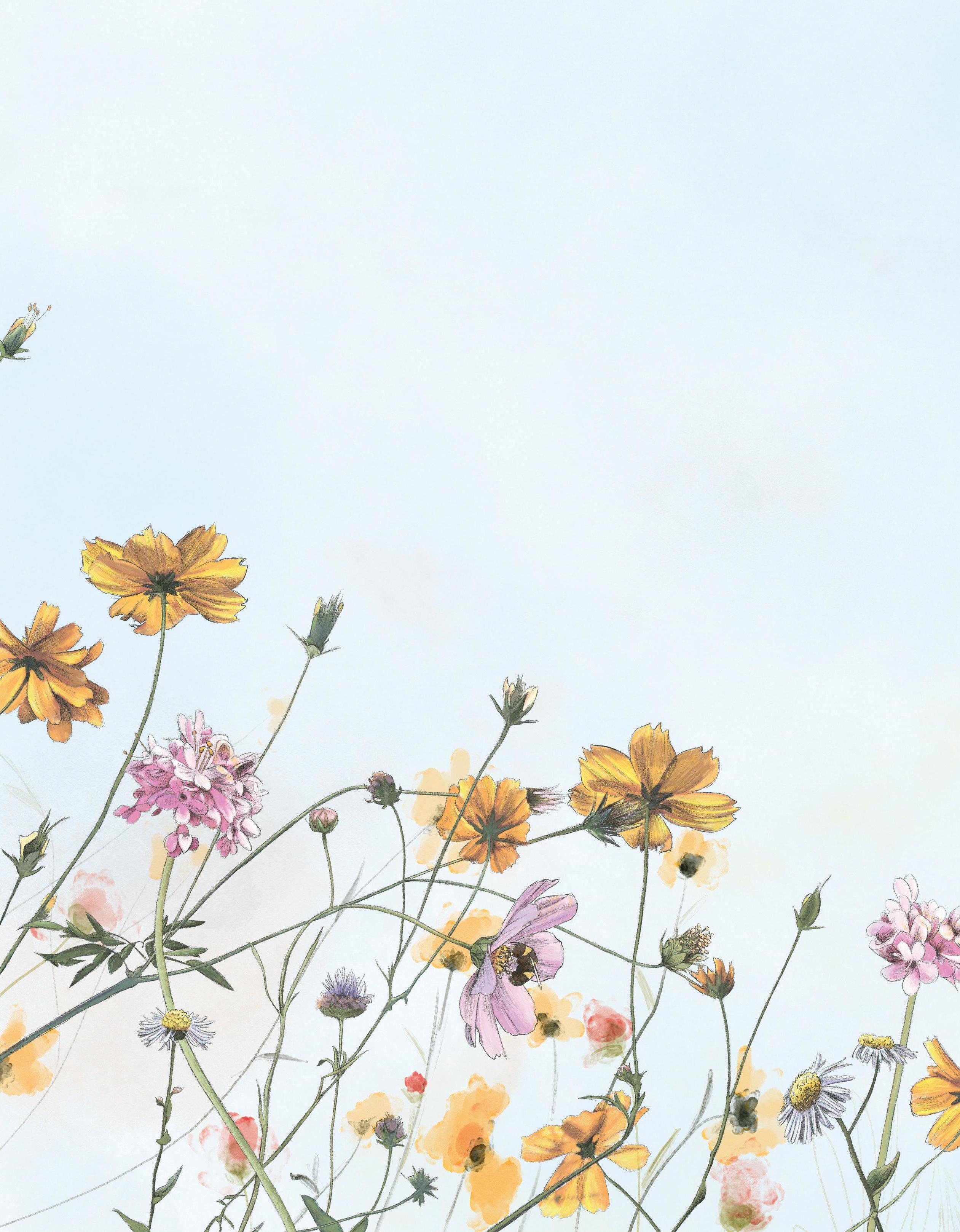
I am tremendously grateful for all of the hard work that my staff does to produce this magazine, especially during the challenges of the past eighteen months. I also express my appreciation to all the employees of the Southwest Utah Public Health Department for their
dedication, hard work, and enthusiasm during our response to the COVID-19 pandemic. At the time of this writing, the health department passed a remarkable milestone; the delivery of 150,000 doses of COVID-19 vaccine. It is a remarkable accomplishment.
To the many people that have worked so closely with us to meet the challenges posed by COVID-19 in almost every conceivable situation, you have our gratitude. This includes those working in schools, healthcare, emergency response, government, and private businesses. I want to recognize the members of the Southwest Utah Board of Health, who have provided the support we needed to do our job. Finally, to the communities we serve, thank you! We were all in this together, and together we were able to show what united communities and dedicated, caring people can do when they put others ahead of self. It is a pleasure to serve as your health officer.
Rates of COVID-19 cases and deaths are down dramatically since the surge this past December and
January. It is unfortunate to note that there are still people who are getting infected, still hospitalizations from COVID-19 and, sadly, deaths. The new vaccines have proven to be tremendously effective; fully vaccinated people seldom end up in the hospital, and deaths in that group from coronavirus are almost non-existent. I am obviously an advocate for vaccination, but I honor everyone’s right and responsibility to make the best choices for their situation.
I have been thinking about how we perceive risk, and how that perception of risk has driven how we have responded and perhaps should have responded to this pandemic. Utah has now identified over 400,000 cases of COVID-19. That number is certainly an underestimate of how many cases there really were. Most serologic studies indicate that there were probably two unidentified cases of COViD-19 for every case that was identified. The overall mortality rate for COVID-19 cases identified in Utah was .6% (or 6 cases per thousand). If the actual number of people infected was more like 1.2 million, as studies suggest, that would put the fatality rate at somewhere around .2% overall, although the risk from the disease varied greatly depending on age and underlying health conditions. Overall, about 14% of those over 85 who were infected with COVID-19 died, and 6% of those infected died who were ages 70-84. I am encouraged by the fact that 85% of those 70 and older have been vaccinated, contributing to very low case rates and hospitalizations in this group, recently.
We are shifting our focus as a society away from government interventions to personal responsibility. This is a good thing; it allows each of us to evaluate what we can do to protect those we love as well as ourselves. There have been billions of news articles about COVID-19, and you’d think all of us would be COVID experts by now. One of our goals as a health department has been to help you sort through all the noise to make the best decisions for your - and your family’s – health when it comes to disease outbreaks and other public health issues. Health Magazine is one of the ways we do this, along with messaging through local media, our website, and social media platforms.
We hope we will continue to be a trusted voice as you seek reliable information now and in the future. Health, in the end, is the first and perhaps most important wealth.
Sincerely,
 David W. Blodgett, MD, MPH Southwest Utah Public Health Department (SWUPHD) Director & Health Officer
David W. Blodgett, MD, MPH Southwest Utah Public Health Department (SWUPHD) Director & Health Officer

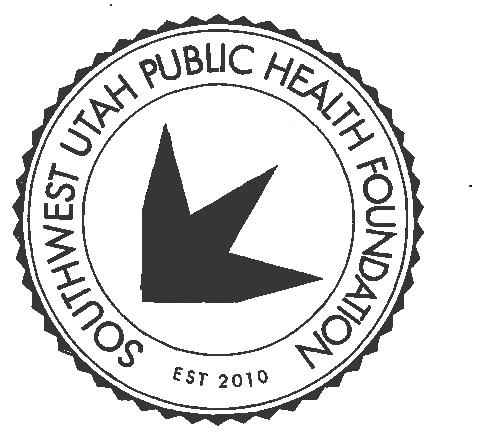
The Health Department passed a remarkable milestone; the delivery of 150,000 doses of COVID-19 vaccine.
Whether you are a long-time resident of Southwest Utah or a recent arrival, our region’s natural wonders are hard not to notice. We are home to state and national parks and monuments, rivers and reservoirs, and a variety of landscapes from deserts to mountain ranges. Summer here is also the season for wildflowers, which appear in many forms in all elevations. We have illustrated each article in this issue with a local wildflower species, which we also feel represents the diversity and collective value of our communities – rural and urban, old and young, and home to many ethnicities, backgrounds, cultures, and beliefs. Southwest Utah is where people and organizations come together in times of hardship, and we are hopefully striving to be unified in protecting our health and well-being, regardless of differences.
Disclaimer: while all wildflowers found throughout this issue are local to Southwest Utah, their descriptions and drawings were not created by botanical experts, merely local enthusiasts.

6. ARBOVIRUSES
By Danielle Timothy RN, BSN8. HEAT SAFETY
By David Heaton10. DEADLY DUST
By Danielle Timothy RN, BSN12. HEALTHY HABITS
By Naomi Martinez & Alecia LedwardPROMOTE
14. REDISCOVER ZION
BY BIKE By Kye Nordfelt16. VOLUNTEERING
By Suz Roam20. WATER SAFETY
By Jeremy RobertsPREVENT
22. ACTIVE SENIORS
By Tina Hicks24. RADON
By Shallen Sterner26. THE "LONG HAUL"
By David Heaton28. 2020 ANNUAL REPORT
30. WILDFLOWERS


Arboviruses include over 500 diseases spread by arthropods like mosquitos and ticks. Mosquitoes are the most common vector of arboviruses, and - although there are over 200 types of mosquitoes - only about 12 types spread viral and protozoan diseases. Mosquito-borne arboviruses have become a major global public health issue in recent decades due to outbreaks of diseases like Zika, yellow fever, chickungunya, dengue, and West Nile virus.
While dengue is the fastest spreading of these diseases in the world, the lead-

ing cause of mosquito borne illness in the United States has been West Nile virus (WNV). In Utah, WNV is one of three mosquito arboviruses found that cause encephalitis (or brain inflammation) in humans, along with Western equine encephalitis and Saint Louis encephalitis.
West Nile virus is spread by the bite of an infected mosquito, typically through the summer and fall months. It is not known to transmit human-to-human. Approximately 80% of individuals who have WNV experience no symptoms, while others expe-
rience fever, headaches, body aches, joint pain, vomiting, diarrhea, or a rash on the trunk of the body. Some individuals also experience fatigue that lasts weeks to months.

West Nile virus can also cause rare but fatal neurological disease in humans. Less than 1% of those infected develop neurological symptoms, with some effects being permanent, and death resulting in 10% of that population. Neuroinvasive WNV affects the central nervous system causing encephalitis, meningitis (inflammation of the membranes that surround the brain and spinal cord), and acute flaccid paralysis. Symptoms of neuroinvasive WNV include high fever, stiff neck, disorientation, convulsions, muscle weakness, vision loss, coma, and paralysis. Individuals older than 60 and those with health conditions that weaken the immune system are most at risk, but anyone can become severely ill. To put it more clearly, it is estimated that approximately 1 in every 150 infected persons will develop this severe form of West Nile virus.
Unfortunately, treatment for neuroinvasive WNV consists only of supportive measures which involve hospitalization, IV fluids, respiratory support (ventilator), and preventing additional infections. There is no vaccine for humans at this time. Fortunately, very few confirmed cases, if any, are reported in Southwest Utah on an annual basis, although it
is more frequently detected in mosquito samples.
Preventative measures against WNV (and other arboviruses) include:
• Using insect repellent that is Environmental Protection Agency (EPA) registered. Follow the directions on the product label.
• Dressing in light colored clothing, long sleeves, and pants.

• Covering strollers and carriers with mosquito netting.
• Using screens on windows and doors.
• Use of air conditioning.
• Sleep under mosquito nets when traveling, and use them correctly.
• Destroying mosquito breeding grounds on your property by emptying, covering, scrubbing, and throwing out items that may hold stagnant water.
The Southwest Mosquito Abatement and Control District serves the Washington County area using proven control measures that will reduce the mosquito population and any potential diseases they may carry. This team also conducts surveillance to determine how many mosquitoes we have in an area, what species they are, where the sources of standing water are located, and how effective control measures are. Visit swmosquito.org for more information.
For further information about WNV and other arboviruses, please visit the Centers for Disease Control (CDC) at cdc.gov/westnile.
 Officer
Officer
Our sun is a perfectly spherical ball of gas - mostly hydrogen and helium - and among a smaller class of stars, although it's 864 million miles in diameter. The sun has about 5 billion more years before its expiration and is the important source of life on earth. Sunlight is actually radiation, and although it's the most important source of life on earth, these rays and the resulting heat can be hazardous to humans.
Heat is the number one weather-related killer in the United States, resulting in approximately 400 deaths per year. To prevent heat-related fatalities or injury:
• Limit or avoid strenuous outdoor activities in the heat of the
day, especially if you are elderly or unaccustomed to the climate. Try to stay in an air-conditioned place. In fact, air-conditioning is the best protection against extreme heat.
• Wear lightweight, loose clothing and a hat.
• Stay hydrated with plenty of water (avoid sugary drinks), even if you’re not thirsty.
• Take frequent rests in the shade, if possible.
• Never leave children or pets alone in a vehicle.
HEAT EXHAUSTION: Can occur with prolonged exposure to heat and dehydration.
SYMPTOMS:
• Heavy sweating
• Skin becomes pale, cool, and moist
• Rapid, weak pulse
• Muscle cramps
• Tired, weak
• Dizziness, fainting
• Headache
• Nausea, vomiting
TREATMENT: Drink cool, non-alcoholic beverages (water is best), go to an air-conditioned building or vehicle, take a cool shower or bath. Seek medical attention if symptoms last over an hour or the person has a history of heart problems.
HEAT STROKE: A serious condition that occurs when the body is no longer able to sweat and cool down.
SYMPTOMS:
• Very high body temperature (103° F and above)
• Skin becomes red, hot, and dry
• Rapid, strong pulse
• Throbbing headache
• Dizziness
• Nausea
• Confusion
• Slurred speech
• Unconsciousness, seizures
TREATMENT: Get immediate medical assistance while cooling the victim using any methods available until temperature drops to 101-102° F at the most. Do not give fluids to drink.
SUN BURN: Sunny days in the outdoors means potential sunburn. You can also get exposed from sunlight reflected off sand, slickrock, and water. Utah has the highest rate of

melanoma (skin cancer) in the nation, due in part to sun exposure at high elevations and time spent outdoors. Southern Utah averages up to 300 sunny days per year. While some exposure to sunlight can actually be beneficial, damage can start after about 15 to 20 minutes without protection. Sunburns can cause long-lasting damage to the skin, which increases the risk of skin cancer, so protection is important. The best ways to prevent sunburn are:
• Apply sunscreen. Although no sunscreen is 100% effective, wear one with at least a 15 SPF (Sun Protection Factor), which blocks about 93% of damaging rays. It will need to be reapplied every two hours or after being in water. An SPF of at least 30 is recommended for children under six years old. The benefits of anything over 50 SPF are questionable. Look for a “Broad Protection” sunscreen, which protects against both UVA (aging) and UVB (burning) rays.
• Wear a hat (⅓ of skin cancers occur on the nose)
• Wear sunglasses (look for 100% UVA & UVB protection)
• Seek shade, especially from 10am to 4pm TREATMENT: Avoid repeated exposure to the sun. Take frequent cool baths or showers to relieve pain. Gently pat dry then apply a moisturizer containing aloe vera. Apply over-thecounter hydrocortisone to particularly painful areas but avoid using anything with “-caine” in the name, as they can cause irritation or allergic reactions. Take aspirin or ibuprofen if needed and drink plenty of water.
While the sun is vital to the ongoing existence of life on earth, it can also be hazardous if we are exposed to its heat - and rays - beyond our ability to stay cool and covered. Enjoy the sunny days of summer, but respect the source.
Aquilegia Express
This Rocky Mountain variety can be found sweeping through alpine meadows and into the woodlands.

Northern Argentina, 1889: 33-year old soldier Domingo Escurra is examined by medical personnel for what was thought to be a spider bite. The lesion had worsened and other lesions sprouted even after he had applied tobacco and used a penknife to create incisions. Escurra was diagnosed with lupus vulgaris (painful tuberculosis skin lesions) at the military hospital, but the prescribed treatment was ineffective and he was transferred to another hospital where he was diagnosed with mycosis fungoides (skin lymphoma). Treatment was again unsuccessful.
In 1891, as the lesions began to take over Escurra’s extremities and trunk, he was admitted to the University Hospital Clinics in Buenos Aires, where he came under the care of intern Alejandro Posadas. Accepting the mycosis fungoides diagnosis, Posadas
published a detailed and groundbreaking description of his patient’s disease, and followed the case until Escurra’s death seven years later. Domingo Escurra’s head was preserved, along with a hand and foot, as medical specimens.
Meanwhile, during the same time period, two farm laborers who had immigrated from the Azores were hospitalized in San Francisco with skin lesions. Microscopic examinations showed the presence of spherical organisms which doctors named “coccidioides”. Treatment for the disease, applied under chloroform anesthesia, was described as follows: “All the affected areas … were most thoroughly scraped with a sharp spoon. The raw surfaces were then vigorously scrubbed with a bristle brush and an abundance of bichlorite solution … was applied.” Both patients eventually died from the illness.

At the turn of the century, this disease was finally properly classified by Professor William Ophüls, who had studied the case of another Azorian farm immigrant who had also recently died in a San Francisco hospital. He noted mold growth in lung tissue and the likelihood of airborne spread, and named the disease caused by the pathogenic mold “coccidioidal granuloma.”
In 1948, while visiting an anatomy museum of the Buenos Aires Medical School in Argentina, a doctor encountered a disfigured human head preserved in a jar of formaldehyde. It had multiple skin lesions, but no identifying information. He recognized it from the well-known description of Domingo Escurra’s fatal illness published by Alejandro Posadas over fifty years prior. Escurra’s hand and foot were recovered later from another museum where they had been labeled ‘tuberous leprosy’. The specimens were tested and found to have actually been infected with coccidioidal granuloma, making Escurra the first known patient infected with what we now call coccidioidomycosis. Coccidioidomycosis, or “cocci” for short, is also referred to as valley fever. It is a disease caused by coccidioides fungus. These fungal spores are carried in dust particles and are found in the soil of areas that have low rainfall, high summer temperatures, and moderate winters. The fungus is found in Southwest USA, Mexico, Central and South America, and the Southwestern United States, including Southwest Utah.
Cocci does not spread between people or animals, but is inhaled as airborne particles after soil is disturbed by wind, construction work, farming, digging, off-road vehicle use, biking, and hiking.
Up to fifty percent of people who are infected develop flu-like or pneumonia-like symptoms one to four weeks after exposure. Some symptoms associated with the disease include coughing, chest pain, fever, headache, muscle and joint aches, rash, fatigue, shortness of breath, and sputum production that can last weeks to months. The rash is usually what individuals remember. It presents itself as painful or tender with slightly elevated bumps - either blue or brown - located on their chest, back, or extremities. The rash
can also present as red and raised and may look like blisters or pointed pimple-like bumps.
Those with weakened immune systems are at greatest risk of complications, while some studies have shown that people (especially men) of African American or Asian descent are at highest risk for contracting the disease.
Cocci usually infects the lungs, but can spread throughout the body years after the primary infection. Those who have this disseminated disease (about 1%) can form abscesses in the skin, bone, central nervous system, joints, and tissues. The mortality rate is .07% in those infected with cocci but increases in patients who are elderly or immunocompromised and is 12-17% in cases of disseminated disease. Cocci meningitis is almost always fatal within two years if not treated.
Early treatments for cocci, such as those mentioned in the cases of Domingo Escurra and the farm workers in California, also included topical applications of volatile oils and nystatin, x-ray therapy, and amputation of the affected extremities (“the only curative intervention”). It wasn’t until 1953 that soil obtained from the Orinoco River Valley in Venezuela was found to secrete anti-fungal properties which paved the way for effective treatment.
Today, mild cases of cocci usually resolve on their own. Oral antifungal medications given over the course of 3-6 months can shorten the length of illness and prevent complications. More serious cases usually require treatment through intravenous medication. In some situations, surgical removal of cavities in the lungs or the draining of abscesses becomes necessary. Relapsing is possible, but rare, and most exposed individuals develop lifelong immunity. Currently there is not a vaccine for the disease.
Coccidioidomycosis causes an estimated 15% to 30% of community-acquired pneumonias in areas like California and Arizona, and the disease has likely been widely under-recognized. Fortunately, healthcare providers in endemic regions are gradually becoming more aware of cocci and have testing available to confirm infections in their patients.
Mertensia alpina
Bluebells bloom in mountainous meadows and aspen groves, blooming from late June to early October.


Cameron Payne always loved making delicious food. “I don’t know what it was, but at a very young age I wanted to open up a restaurant,” he says. “ I decided to go into culinary school, which I did in Oregon, and then I started working in Las Vegas.” After rotating through several renowned restaurants (including Wolfgang Puck’s Spago), he realized something was missing from this delicious food: a long-term commitment to health.
Cameron’s experience and his commit -
ment to healthy cooking led him to become the lead chef at a fitness resort. There, he furthered his knowledge with expertise from dietitians and health professionals, designing diets specifically for weight loss and health maintenance.
“Working at the fitness resort helped me figure things out,” says Cameron. “How to minimize oils, avoid certain oils, and use lean meats instead of rib-eyes and sirloins - there are things you pick up working there and other places and then you just tie everything together.”
Now, Cameron’s St. George restaurant, The Twisted Noodle Cafe, has again been awarded the “Healthy Habits” Gold Seal of Approval from the Southwest Utah Public Health Department (SWUPHD). Cameron emphasizes that he is continually committed to keeping his menu healthy for Washington County residents and visitors alike.
“The Spago style uses lots of oils and French style with butter; we take a lot of that out,” Cameron explains. “We use lean meats. We do a lot of chicken. Veggies are always good - the more veggies, the healthier you’re going to be. I take pride that we don’t use microwaves, we don’t reheat food, we don’t use a lot of processed foods, we don’t buy the “take out of the freezer and fry” food. When you leave our place, you leave feeling good.”
In addition to The Twisted Noodle Cafe, eight other restaurants were awarded the 2020 Healthy Habits recognition. They include:
GOLD: Twisted Noodle Cafe, Teriyaki Grill, and Gaia’s Garden Cafe

SILVER: Viva Chicken, Port of Subs, Twentyfive Main
BRONZE:


In evaluating these restaurants, the health department considered nutritional information being included on the menu, whole grain options, allergy-friendly food, and alternative menu choices. Restaurants reaching the gold level are held to an exceptionally high standard.
“The average American dines out 4.5 times a week, many times choosing unhealthy options,” says Alecia Ledward, Health Educator at the SWUPHD. “These Healthy Habits restaurants give residents options so they can make informed dining choices and enjoy the benefit of nutritious eating. We invite residents and visitors to enjoy these and other healthy restaurants in the community.”
Healthy Habits restaurants display the SWUPHD seal of approval on their front door, receive free video advertising on the health department website, a page in the Dixie Direct discounts book, and become eligible for Eat Well Utah evaluations. Washington County area restaurants can apply for the 2021 Healthy Habits award by visiting swuhealth.org/healthyhabits or scanning this code:

Southern Utah is amazing for so many reasons; the friendly people, entertainment options, great food, and of course the incredible scenery. From the high desert to the snow covered mountains - it has it all, and I love living here. If you’re looking for a memorable vacation or just a fun day trip you will never forget biking Zion National Park’s main canyon. I recently rode it with my family and here is a summary of our experience.
Bicycling is a fun way to get your 30 minutes of exercise in a day. I love to ride a bike and I love to be with my family (my wife and I have five kids). I am an avid bike commuter and comfortable on the road, but the rest of my family is not. We
like to ride both e-bikes and regular pedal bikes, and either style works for the Zion Canyon Scenic Drive.
When I first moved to Southern Utah we were anxious to visit Zion. Within the first year we visited the park two separate times, however I didn’t love the experience. I was cooped up in a stuffy bus and often felt like I was in a line at an amusement park along the trails. Unfortunately, this experience turned me off and I didn’t return to the park for many years.
One day a friend told me to try ditching the park buses and take my family through on bikes instead. I hesitated taking all my kids because I didn’t know how safe it was or if they could handle
the ride, but we eventually decided to give it a go. I admit that we actually brought electric bikes for this ride, although we saw many individuals and families riding pedal bikes in the canyon, too. Over the years, I have trolled the classifieds and found a number of inexpensive e-bikes that have provided a ton of fun for our family. You can also rent e-bikes in Springdale, Zion’s gateway town. The path to Zion Canyon Scenic Drive and the drive itself is a steady ascent so you will want to bring a bike that allows you to shift up and down to make it easier to ride.
We drove up to Zion, parked in the visitor’s center parking lot and unloaded our bikes. While the beauty around the visitor’s center was already remarkable, my family was anxious to get into the canyon. We rode our bikes through the parking lot and hit a biking/walking path just south of the South Campground. This two-lane exclusive bike and walking trail winds back and forth across the Virgin River, peacefully separated from auto traffic and featuring excellent views culminating in a ride under the highway (SR 9) into Zion’s canyon. Coming out from under the bridge you approach the base of the canyon where the scenery only becomes more spectacular. We merged onto the Zion Canyon Scenic Drive, a two-lane road designed for vehicles, but Zion National Park has blocked off the road to car traffic. Only buses and approved touring company vehicles are allowed, making it ideal for riding or walking.
Vehicular traffic was occasional and the buses would drive by slowly (around 30 miles per hour). My kids, ages 9 to 16, had no problem riding the road. The lack of traffic helped them feel completely comfortable.


We continued to ride, wind blowing through our hair as we gazed up at the imposing red and orange colored cliffs intermixed with white slick rock, toward the top and dotted with beautiful ponderosa pine trees
clinging to the cliffs. I had never experienced such joy in a ride. I felt like a kid riding for the first time, feeling that natural high and freedom a bike can provide. We stopped at the Court of the Patriarchs for pictures, and continued on past Zion’s Lodge. At one point along the road, we passed deer grazing about five feet from the roadside. The kids loved it.
We had a look at Angels Landing and pulled off the road at Big Bend where we took more pictures. The park has done a great job at creating a walking and biking-friendly route with the scenic road, which is being used abundantly by pedestrians along with novice and expert riders. We didn’t have to worry about cars buzzing by our ears or getting hit by oncoming traffic.
We ended at the Temple of Sinawava, where many start their hike up the famous Zion Narrows. We pulled out a lunch and the kids played in the Virgin River before the return trip. The downhill descent out of the canyon was a blast - we especially enjoyed this part. We rode with many other people, all smiling and waving as they experienced one of America's greatest national parks.
Our total mileage was about 16 miles round-trip. Take a lunch, stop and enjoy the views, play in the river, and consider adding a hike for variety. Zion Canyon is now one of our family’s favorite rides. We have since ridden this road a couple of times with relatives and friends and each experience is breathtaking.
A couple of other amazing local bike rides on paved paths can be found in Snow Canyon State Park, Bryce Canyon National Park to Red Canyon, and up Coal Creek east of Cedar City. All these routes are beautiful and can be planned as part of a vacation or day trip. Whether you have a pedal bike or want to give e-bikes a try, there are many scenic routes to experience in Southern Utah!
Thrives in open meadows, along streams, roadsides, and forest edges.
Whether you have a pedal bike or want to give e-bikes a try, there are many scenic routes to experience in Southern Utah!
Utah is renowned for its volunteer spirit and has been ranked number one for highest percentage of volunteers in the United States for years. Our corner of the state is no different, as evidenced by the Southwest Utah Medical Reserve Corps (MRC), a nationwide volunteer organization managed locally by the Southwest Utah Pubic Health Department (SWUPHD).

The Medical Reserve Corps trains to prepare and assist communities during
emergencies or disasters. The Southwest Utah MRC has over 600 registered volunteers, half of which have a medical background. Those without medical training are needed to assist with other disaster response needs such as clerical services, traffic control, safety, and sanitation.
There are normally fewer than 60 employees working for the SWUPHD, so when newly-approved COVID-19 vaccine shipments began rolling out to local health departments, a call went
out to the MRC for help. 140 volunteers responded and staffed vaccination clinics throughout the five-county district. They included doctors, nurses, dentists, physician’s assistants, pharmacists, and EMTs. Others served as greeters, directed indoor traffic, gave wheelchair assistance, provided patient observation, and checked paperwork. Some were newly trained, others retirees. All remained dedicated and hard-working, showing up on time and putting on colored vests and nametags to cheerfully work 4-to-8hour shifts.
Here are experiences from some of our MRC members:
“My husband Kelly and I were counting the days to retirement, wrapping up 40 years of working in health care. I'm a nurse and Kelly a podiatrist. At the end of 2020 the pandemic was in full swing. Then in January we heard that a vaccine was approved and becoming available very soon. So, we called around and made a connection with the Southwest Utah Public Health Department. We joined the Southwest Utah MRC, received training, and began about 12 weeks of giving injections with a GREAT team of volunteers from all walks of health care. The MRC is extremely well organized and knows how to deliver a huge undertaking like the vaccine program. We feel like this was the perfect 'end game' for us and would do all over it again. Great job, Southwest Utah Public Health!”
Janice & Kelly Reber, Washington
County“I like volunteering at our county’s Covid vax clinics for lots of reasons. Every shot we give moves our community and nation closer to "normal" and protects our residents. Second is working with a great bunch of folks, such nice people committed to protecting all of us. Lastly – and most rewarding - is meeting all the veterans that have sacrificed so much for our nation. It's been a terrific opportunity to talk to the Vets and hear their stories and thank them for their service.”
Scott Thomas, Iron County“Have you ever sat in your comfortable recliner watching the news report about a disaster’s aftermath and wanting to go and help the people but don’t know how? I have multiple times and it is frustrating! It was no different when the coronavirus pandemic started. Not only were lives turned upside down with shut downs, isolation, masks, physical distancing, sanitizing, livelihoods ruined, schools closed, and so much more, but there was frustration, fear, and wondering about an unknown illness and lonely deaths. Then, finally, a hopeful ray of life and safety emerged with vaccines. In February I heeded the call from Governor Spencer Cox for medical and non-medical volunteers to assist in mass vaccination clinics in Utah. After passing through a state and FBI background check, I was assigned to work with the Southwest Utah MRC. I was given the opportunity to fight this deadly virus and serve my community! This service included assisting individuals from their cars to the doors of the St George Senior Center, greeting patients and confirming paperwork, pairing patients with vaccinators, and observing patients for any potential negative reactions to the vaccine. While I performed these tasks, I witnessed meaningful moments, from the energetic eighteen-year-old excited to be vaccinated to an elderly mother who was only at the clinic because it was where her son wanted her to be. Or the bravery of a terrified-of-needles young adult who stepped forward and sat in the chair to receive an injection to the stories of a 90+ U.S. Coast Guard veteran who patrolled the Japanese coastline in 1945. It warmed my heart to meet thousands of my fellow citizens who chose to get vaccinated to protect themselves, their families, and our community. Today, as
I sit in my comfortable recliner watching the news with the latest information about the pandemic, I’m grateful for my tired body and the timely opportunity to serve with the Southwest MRC.”
Nancy Dolan, Washington County“We are retired physicians living in Springdale, Utah. We did all that we could to avoid contracting Covid-19 by spending that first year at home. When Utah received its first allocations of vaccines, we were ready to be a part of the immunization effort, knowing that vaccines were going to be the only effective way to battle the pandemic and get all our lives back to normal. We joined the Southwest Utah MRC and began working with the staff of the Southwest Utah Public Health Department and a small army of temporary employees and other MRC volunteers. We quickly became a team, with the leadership of the nurses and administrators of SWUPHD. Demand was high for the first few months, and we all worked hard and heard from patients many times every day how efficient an operation we had. No long lines! Getting an appointment was the most difficult part of the process, as all the eligible people wanted the shots as soon as possible. But as time went on, everyone who wanted a vaccine could get one. We hope that our efforts will be rewarded with a fully vaccinated population and many lives saved.”
Susan Rovira and Leo Gallia, Washington County“As a volunteer with the MRC, it's been my honor to participate in the Covid Vax program, ‘getting the shots into arms.’ It's been nice to return to some nursing after working with animals in a nursing role for the past 15 years and I've made new friends and really enjoyed working with Christa and Shana and the others at the health department in Kanab who welcomed me with open arms. Thanks!”
Phyllis Parthemore, Kane County“My volunteer experience with the MRC has been immensely rewarding. Since retiring from a long healthcare career, the pandemic has given me the opportunity to utilize my nursing skills in a meaningful way. I have been given the opportunity to give back to my community as a Covid vaccinator. Many community members who come for their vaccine express their sincere gratitude to us, which is heartwarming. I have forged lasting friendships among other volunteers and health department staff. I am grateful for such a rich experience the MRC has given me.”
Jody Amacher, Kane County“The past year has been very difficult for many of us due to Covid-19. I have had to work from home and social distance for most of the past year due to the high risk Covid poses to my husband. I have been a member of the Southwest Utah MRC for several years. When the vaccine was made available in this area I decided to volunteer my time as a means to protect my family and to give back to my community. I have had the opportunity to volunteer at the St George and Cedar City SWUPHD Covid-19 vaccination clinics for the past 4 months. This has been one of the most fulfilling experiences of my life. So many people have expressed their gratitude for giving them hope for a normal life again. I think we get so caught up in our own situation that we forget how fortunate we are compared to others. The stories of isolation and loneliness
experienced over the last year have been heartbreaking and I’m so grateful I have been given the opportunity to instill a little hope through something as simple as a shot.”
Tiffany L Petersen, PhD, RN, Associate Nursing Professor at Dixie State University
“A day in the life of a Southwestern Utah MRC volunteer: the day began early, bright, and full of hope. It was going to be a long day with 4,500 people scheduled to be vaccinated at the St. George Active Life Center. By the end of the day 4,380 people were vaccinated; 4,380 people moved closer to lifting that emotional burden of lock-down; 4,380 people moved all of us closer to health and safety today…and this was only one day! A day that left our feet tired, our backs aching, our voices hoarse, but our hearts were filled with joy. As we reflect back on that day, we witnessed thirty-four vaccinators giving over 40 shots every five minutes. Countless volunteers greeting, verifying, directing, observing, and caring for all who entered the doors. Dozens of people behind the scenes, drawing up doses, gathering paperwork, and entering vital data into the computer. We welcomed thousands of people that day as they came to our stations and awaited their turn for a vaccination. We could see in their eyes every emotion there was. Some were excited, some anxious, some scared to tears (if not in tears) but, overwhelmingly, they were thankful that we were all there to help them. We were thankful that they were there, too. That day we got to see, first hand, a part of this community come together with one belief: we are all in this together, and one goal: put this pandemic behind us. We will be forever grateful for the opportunity to be a part of this amazing group of people, giving of themselves for the greater good of all… and this was only one day!”
Frank and Lisa Stone, Washington CountyAs of May 31, 2021, the Southwest Utah MRC volunteers have given 4,341 hours of service in the COVID-19 vaccination effort. Some individuals have donated over 180 hours themselves. They are the first to sign up and the last to leave. Southern Utah University students gave over 900 hours. Dixie State University: over 500 hours. The Utah National Guard donated over 1000 hours.
The efficiency and flexibility of the clinics and overall sheer numbers of vaccines given as soon as possible after delivery would not have been possible without these wonderfully dedicated volunteers. We admire and appreciate them and offer a very sincere...
“THANK YOU!”Also known as prairie-fire growing in dry open places at elevations from 1000-9200 feet.

As the temperature begins to rise each year, many of us begin to look for ways to cool off. Whether it is the community pool, the city splash pad or a neighbor’s backyard pool, water brings much-needed refreshment.
Safety is a vital part of enjoying aquatic recreation, and drowning prevention is often what comes to mind. Using lifejackets, not swimming alone, and knowing your swimming abilities are all important measures that we should take to
prevent drowning. Safety measures specific to pools include proper fencing, life saving equipment, and lifeguards for pools.
Pools and splash pads use chemicals to balance the water chemistry and reduce pathogens (germs) in the water. If the water is cloudy and you are not able to see the bottom at the deep end of a pool, that’s a good indication that the pool chemistry is not being maintained and corrections need to be made before swimming. The water chemistry
of a pool should be checked regularly, preferably daily or more often depending on the use to keep the water clean. Ingesting pool water should be avoided.
Many of us prefer to swim or recreate in the many rivers, reservoirs, or lakes in our area. Unlike a pool, this water is not maintained by chemicals to control pathogens. One of the pathogens that has become more concerning in Utah over the past ten years is cyanobacteria, which causes Harmful Algal Blooms (HABs). HABs are found both in fresh and salt bodies of water around the world. Harmful algal blooms develop when naturally occurring cyanobacteria in the water multiply very quickly to form green or blue-green water, scum, or mats. These blooms can produce potent cyanotoxins that pose serious health risks to humans, pets, and livestock. You can be exposed to HABs through skin contact, inhalation while boating, water skiing or jet-skiing, and drinking contaminated water. The effects range from mild skin irritation to serious illness or (rarely) death. Skin contact symptoms include skin, nose, eye, and throat irritation and difficulty breathing. Ingestion symptoms include abdominal pain, headache, vomiting, diarrhea, kidney damage, liver damage, or neurological symp toms. The effects can be more severe in children and pets.
Over the past three years Utah’s Di vision of Water Quality has been con
ducting sampling of different water bodies throughout the state. In the process of sampling, they have identified HABs in our area at Kent Lake, Panguitch Lake, Newcastle Reservoir, and Minersville Reservoir. In all of these cases the HABs appeared as scum or mats floating on the water’s surface. Last summer, the Division found HABs forming on rocks in the bottom of the North Fork of the Virgin River where it flows through Zions National Park. After sampling these blooms, they found the concentration of toxins to be high enough to pose a risk to humans as they disturbed the bottom while wading through the river, and warnings were issued. As with many aspects of life it is important that we understand how to minimize risks while still enjoying ourselves. Here’s how to minimize exposure to HABs when recreating at bodies of water:
• Don’t swallow water when swimming.
• Wash hands with clean water before eating or preparing food.
• Clean fish well and discard the guts.


As the light of a new day shines bright, we are immediately reminded of the things that truly matter most in life: relationships and spending quality time with one another.
There’s a familiar sound of happy voices filling the rooms at the St. George Active Life Center as it reopens its doors to our community, reuniting friends that haven’t seen each other for over a year as they gather to play cards, put together puzzles and even play a friendly match of indoor pickleball.
Formerly known as St. George Senior Center, the St. George Active Life Center changed its name about five years ago to highlight the various energy-focused activities being offered, from Zumba to
Tai Chi, although bingo is still one of the most highly attended events. Other popular activities include line dancing, ballet, tap dancing, cardio drumming exercise, art classes, and pain management for arthritis. All courses are taught by volunteers who are trained experts in their field and teach these courses free of charge to participants, although they are welcome to donate a dollar for each activity they attend to help support these community offerings. There are also blood pressure and blood sugar tests available on Thursdays from 9:00 a.m.3:00 p.m.
An exciting new addition to the St. George Active Living Center is their Senior Community Garden. The garden
boasts a shed, greenhouse, five grow boxes with more on the way. It’s fenced in and protected to provide quality produce for the senior community. The carrots and lettuce are looking great and they’re hoping to have pumpkins available this fall.
Besides St. George, there are also Active Living Centers in Hurricane and Enterprise, all designed to provide a place where activities and resources are readily available to all those aged 60 and older. Bus transportation is available primarily for medical appointments, however the bus can make stops to the grocery store, hair salon, or home of a loved one to re-
connect after the social distancing and quarantines of the past year.
The Active Living Centers provide meals during the week at $3.00 each (or no cost to those in need) and will even deliver them to homebound seniors. On average, the St. George facility alone delivers about 400 meals in one day.
For more information about the services provided by Southern Utah Active Living Centers, please visit coa.washco.utah.gov, where you can also access a monthly newsletter with the activities schedule. A printed copy of this newsletter can be picked up at your nearest Active Living Center.
245 North 200 West (435) 634-5743
Hours of Operation: Tuesday-Friday 9:00 a.m.-4:00 p.m.
95 North 300 West (435) 635-2089
Hours of Operation: Monday-Thursday 9:00 a.m.-4:00 p.m.
165 South 100 East (435) 878-2557
Hours of Operation: Tuesday, Wednesday, and Friday 9:00 a.m.-3:00 p.m.

Special thanks to St. George Active Living Center from the Southwest Utah Public Health Department for providing a place for us to hold vaccination clinics during the Covid-19 pandemic. We appreciate you and all you do for the community!
Helianthus annuus
Primarily found in prairies as well as dry, open areas. It grows along roadsides, in fields, along desert washes, and in grassy areas.

“People need people.”
Jeanie Johnson St. George Active Life Center Supervisor

Most people know that smoking is the leading cause of lung cancer. What some may not know is that the second leading cause of lung cancer is radon gas. Southwest Utah residents should take some time to place radon on their healthy living radar by learning what radon is and how we can protect ourselves from it.
Radon gas is a naturally occurring byproduct of uranium decomposition. This gas is radioactive and can be harmful with prolonged exposure at certain levels. The U.S. Environmental Protection Agency (EPA) estimates that radon causes over 20,000 deaths each year. Unlike smoking, radon is more of a hidden danger because it is invisible, odorless, and tasteless.
How much radon gas in a house is too much exposure? The EPA recommends reducing the levels of radon in homes to less than 4 picocuries per liter (pCi/L). The national average indoor radon level is estimated to be about 1.3 pCi/L, and about 0.4 pCi/L of radon is normally found in the outdoor air. The levels in Utah houses are very different from city to city and from county to county. There can even be different levels in homes that are right next door to each other. For this reason, homeowners should test to find out what the radon level is in their own dwelling.
Homeowners should take at least an initial sample to find out if their home has a radon level greater than 4 pCi/L.
A short-term test is a good start. This test is usually simple and inexpensive. There are several types of short-term test kits that can be purchased online or at your local home improvement store. Utah residents can order a reduced-price ($10.95) test kit online by visiting deq.utah.gov/radon and clicking the “Order Radon Test Kit” link.
Conducting a second test may provide greater peace of mind to ensure that a home has radon levels below the standard. Make sure to perform at least one of the tests in the winter as radon levels tend to be higher in the winter months.
Homeowners with high radon levels may need to take action to fix their homes. Several techniques can be used to reduce radon levels, including hiring a residential mitigation provider that has been approved by the state of Utah. A listing can be found on the same website mentioned above by clicking the “Certified Mitigators” link.
To promote radon awareness in the community, the Southwest Utah Public Health Department sponsors an annual local Radon Poster Contest for students. We would like to congratulate our 2020 Radon Poster Contest winners, which are as follows:


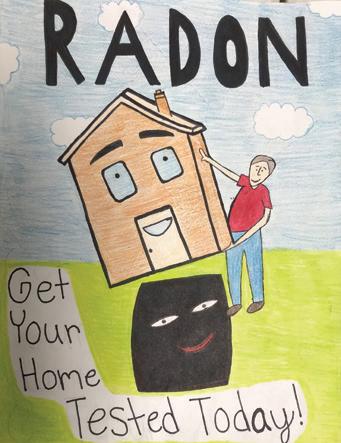

All three students are in the 7th grade and attend Fossil Ridge Intermediate. In addition, the students' posters were sent to the Utah Department of Environmental Quality to participate in a State level contest. Mindy Campbell took 1st place in her grade level and another local student, Burkley Workman, received an honorable mention.
Scan this code with your phone camera to see links for test kits, mitigation providers, test results by zip code, and other radon information.

Named for their tendency to open in the afternoon or evening and found in fields, meadows and open woodlands, often in sandy soil.



Curtis, a local business owner, recently awoke one morning to the sound of an alarm. He peered at the clock readout, puzzled. It was thirty minutes earlier than his usual wake-up time. “Why in the world would I have changed that?” he wondered. Confused, he went back to sleep. Later that morning he found out he had missed an important meeting, although he had been aware of it the night before - enough to set his alarm to make sure he would make it on time.
Such forgetfulness was unlike Curtis, who was used to managing multiple responsibilities. But memory lapses and brain fog had become a problem, along with a host of other symptoms left over
from a family outbreak of COVID-19 at the end of 2020.
“We got it about a week after Christmas,” recalls Curtis. “We had one party together. Then someone had a headache and soon there were other mild symptoms. We all tested positive for COVID-19.” Curtis experienced some loss of taste and smell with a slight fever and headache.
After a couple weeks, when he was no longer contagious and would be considered “recovered” from the virus, he began experiencing a progression of severe symptoms. “I developed a racing pulse, fatigue, and daily headaches,” Curtis says. But the worst issue was shortness of breath. “Trying to get air
into my lungs became a problem. I worked in an emergency room for 27 years, and found myself in the same panic as patients I had seen who were struggling to breathe. When that happens, nothing seems more important than getting air. I’d have to sit down and recover after taking a flight of stairs.”
Repeated visits to a doctor along with tests and scans showed nothing out of ordinary, other than high blood pressure and rapid pulse, which Curtis had never had before. “My doctor had seen other post-Covid patients before and attributed my problems to being a long hauler.”
“Long hauler” is a term describing people who have survived the COVID-19 illness but continue to suffer symptoms and problems long after testing negative for the disease. These effects can last months before going away, although some long-haulers are still struggling over a year after being infected. Current estimates suggest between 10%-30% of COVID-19-positive cases experience persistent symptoms as long haulers, even if asymtpomatic, although a newer study suggests that number may be over 70% for patients who were hospitalized.
There have been hundreds of long haul symptoms reported, and there is the possibility that some of these were coincidental and not related to COVID-19. However, the most common symptoms include fatigue, shortness of breath, sleep disorders, and “brain fog.” Reports of ongoing headaches, chest pain, cough, loss of smell or taste, depression, and memory loss are also typical. Long haulers can be any age, including children, who are otherwise at low risk of COVID-19 complications. The long hauler phenomenon has gradually gained more attention in the media and healthcare professions. In Utah, a private Facebook support group called “Utah Covid-19 Long Haulers (30+ days)” emerged, which has over 3,000 members and advocates for the recognition and treatment of those who are affected.


Recently, the University of Utah opened a new clinic to specifically treat long haulers and conduct
research. Services there are open to residents of the Mountain West region and require a referral from a primary care provider. Appointments and additional information can be found by calling 801-2130884.
Healthcare providers, in the meantime, are encouraged to continue to follow up with their long hauler patients and stay informed about new developments in diagnosis and treatment.
Curtis’ doctor, already experienced with long haulers, enabled him to avoid expensive tests and admission to a hospital. His wife and business partners were able to hold things together, especially during times he would have to sleep an extra six hours to recover from putting in just two hours of work in a day. Medications helped get his blood pressure under control. He started the habit of writing notes and reminders to himself to counteract memory issues.
Curtis’ health has gradually improved. The headaches finally tapered off and his sense of taste and smell has mostly returned. “I’m 90% back,” he declares. “I’m still struggling with fatigue and brain fog but my pulse is normal and I can do most daily activities. Exercise is out of the question though, it’s wiped me out every time I’ve tried it.”
He’s had plenty of time to read and do some research of his own over the past few months. Curtis mentions a theory he came across that indicates some long hauler symptoms may be neurologically based. “Could it be that COVID-19 affects brain functions that control things like breathing versus physical damage to the affected parts of the body?” he wonders. “That might explain why my xrays and scans didn’t show anything unusual.”
As Curtis and thousands of other long haulers continue to function as best as they can, some recover. Others are still in the process, and some are nearly disabled. Fortunately, more attention and research is providing hope that better treatment can be found, and long haulers are at least having their voices heard.
The Southwest Utah Public Health Department (SWUPHD) serves the approximately 269,000 residents of Washington, Iron, Kane, Beaver, and Garfield counties.




• Immunizations administered: 8,162
• International travel immunizations: 517


• TB (Tuberculosis) tests: 1302
• WIC (Women, Infants, & Children) clients: 3,157
• Epidemiology investigation contacts: 18,907
• Death certificates issued: 2,617
• Birth certificates issued: 4,444
• Total food service inspections and consultations: 5,427 (1,329 routine, 43 follow-up, 4,055 consultations)
• Food Handler Cards issued: 7,753
• Water samples analyzed (for swimming pools and drinking water facilities): 5,832 (4,620 pool, 1,212 drinking water)
• Public pools & spas in district: 770
• Restaurants/food establishments in district: 1,097
• Total septic system inspections and consultations: 7,131
• MRC (Medical Reserve Corps) registered volunteers: 485 (1,333 hours volunteered)
• Estimated value of Personal Protective Equipment (PPE) distributed to healthcare providers: $289,938
• Full-scale Strategic National Stockpile/Medical Counter Measure Exercises: 9 locations, with administration of 2,106 flu vaccines
• Events held (exercises/drills, trainings, etc.): 534
• Access & Functional Needs Coalition members: 272
• Language strike team members: 137 representing 34 different languages
• Certified car seat installation checks: 214
• Students completing online courses: over 10,000
• Retailer tobacco compliance checks: 372 (91% compliance)
• Funded active transportation committees in St. George, Washington City, and Cedar City
• Helped advocate for the installation of 2 bike lanes in St. George

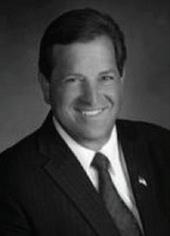

• Helped secure $450,000 to build a bike/walk lane on a dangerous school route

Fees: 28.10%
Other: 1.04%
Contracts/Grants: 43.24%
County Contributions: 27.62%

WHAT
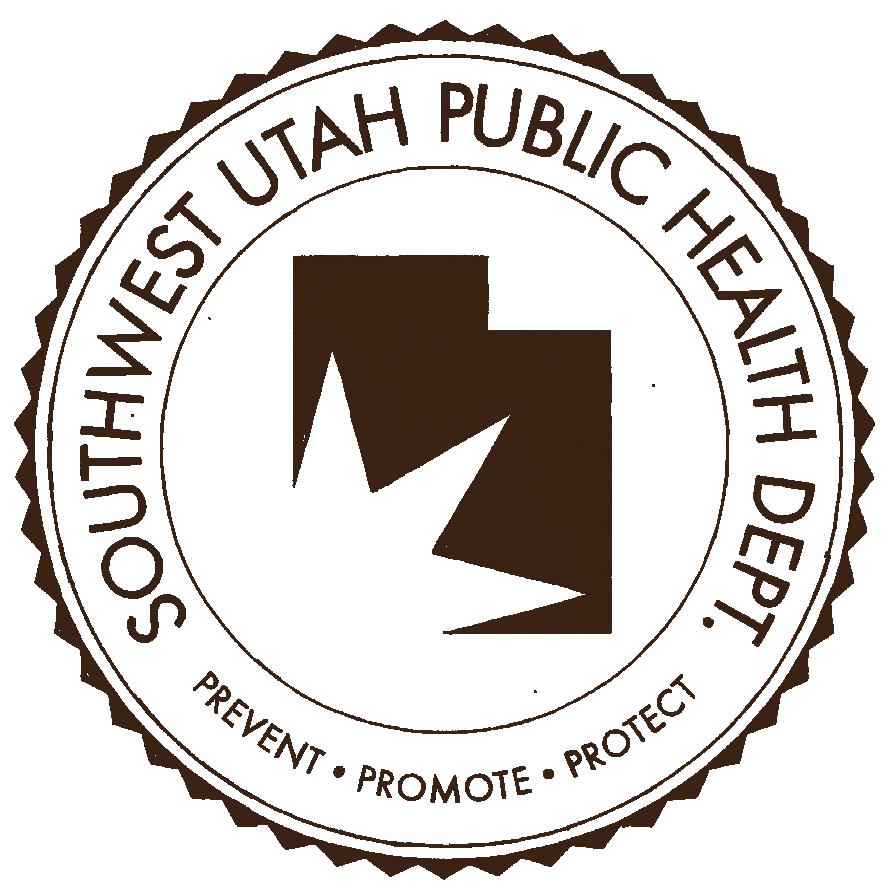




Located at Cedar Breaks National Monument
Each July
Visit nps.gov/cebr for updated information
Located in Zion National Park - 1.9 miles out & back View flowers from April-October
For more great hikes in this area download the AllTrails app
Located at Boulder mountain in Dixie National Forest Wildflower fields with 170 different plant species from late July-August
Just off State Road 153 past Eagle Point Resort in Beaver
Located in south-central Garfield County near Panguitch
Unique Tertiary Claron Limestone Formation soils provide habitat for rare plant species that are found nowhere else in the world.
Wildflowers wilt & perish soon after being picked! In the ground they support pollinators, birds, and small animals. Wildflowers are for everyone, please don't pick them:)
you could color these flowers and cut them out for your own lasting bouquet.

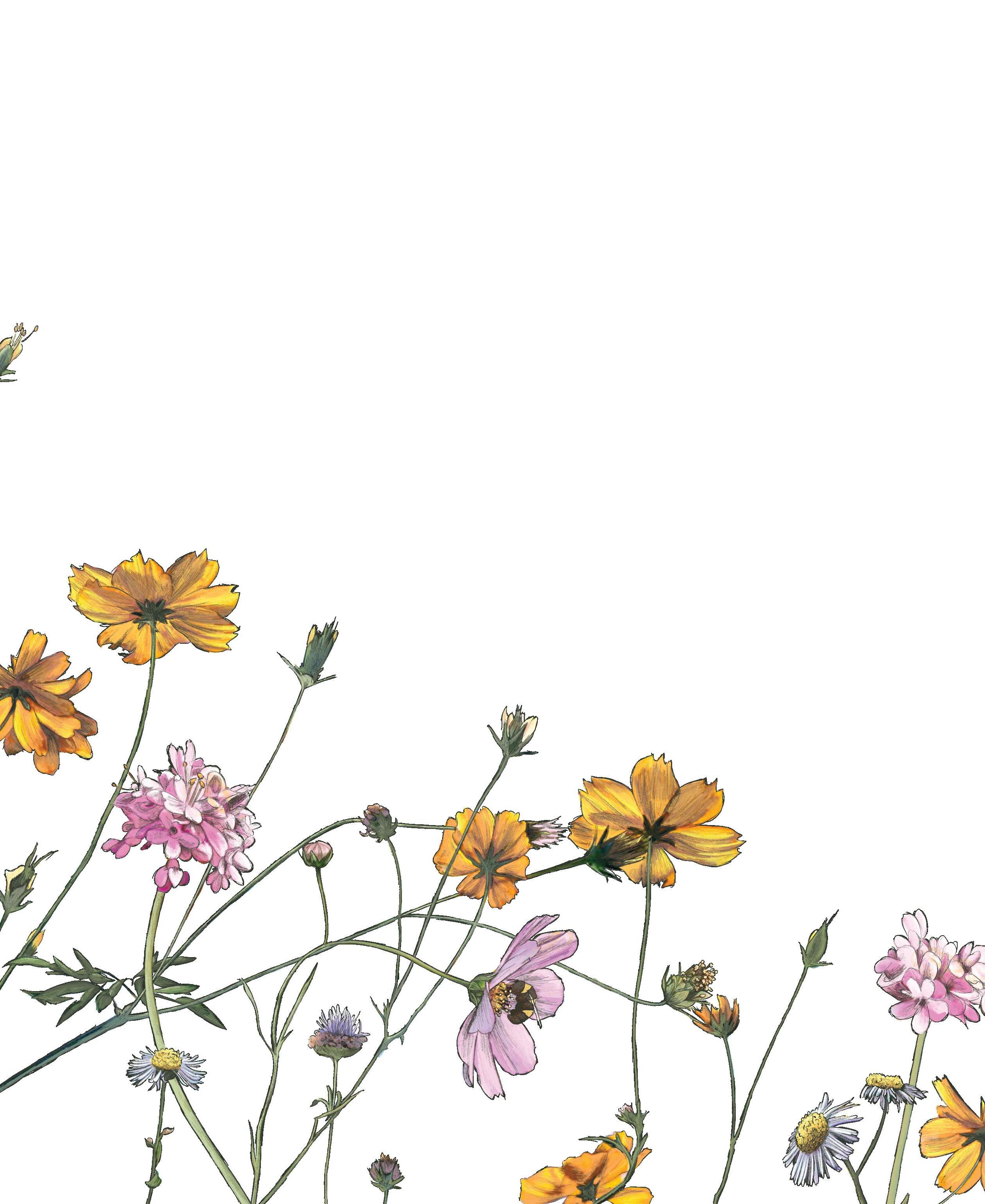
indian paintbrush

fireweed
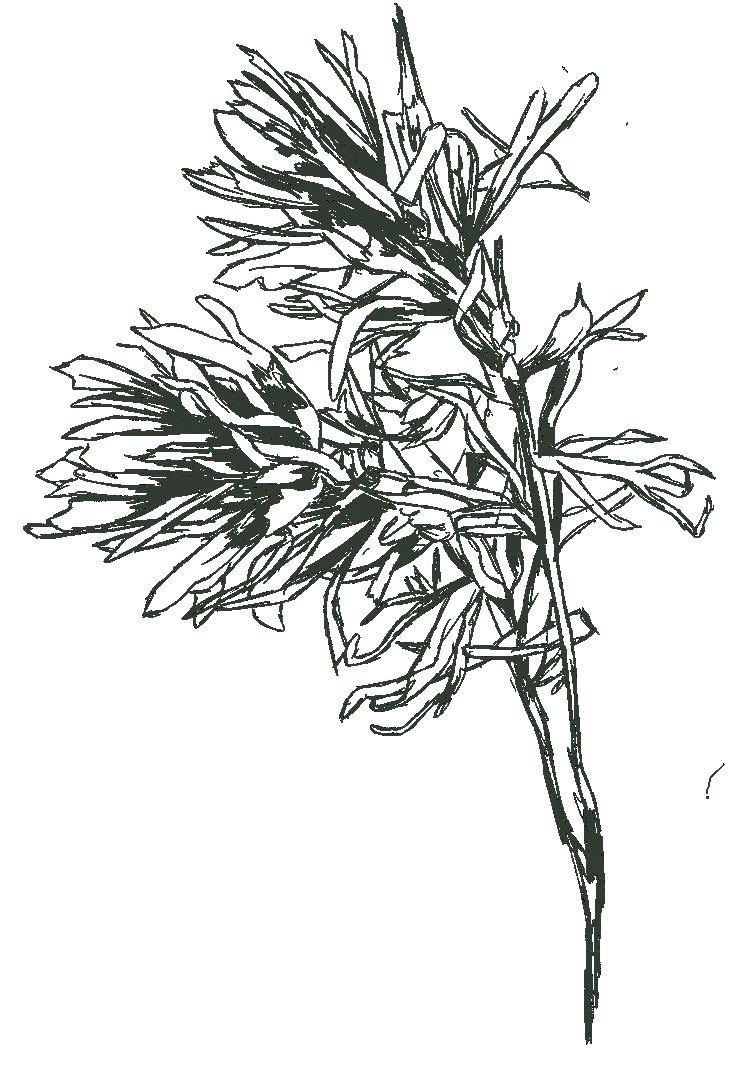

larkspur


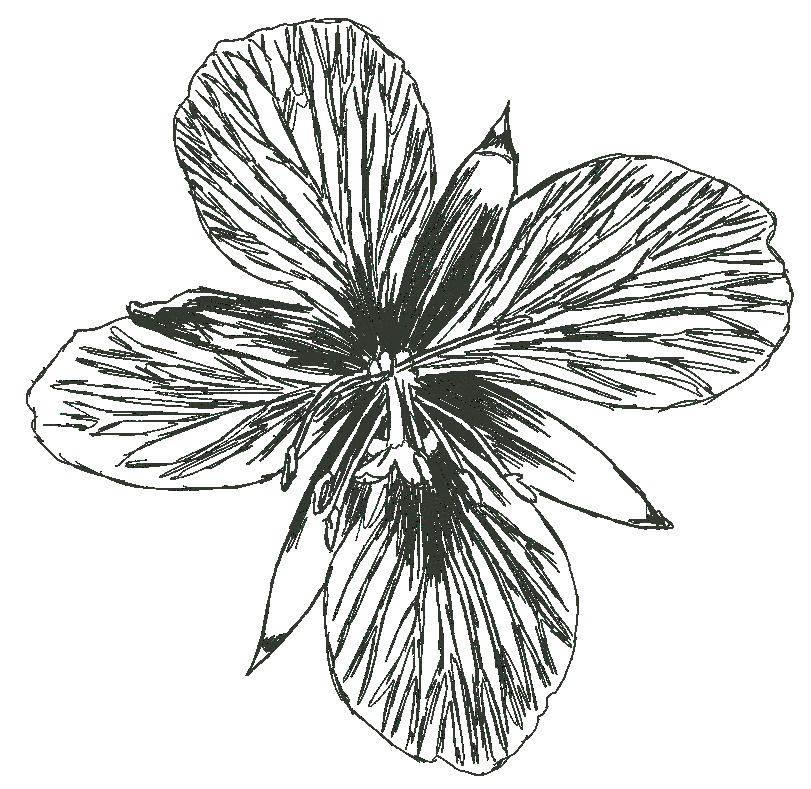
sacred datura

columbine



sunflower
globemallow






"You belong among the wildflowers, far away from your trouble and worry You belong somewhere you feel free."
Tom Petty